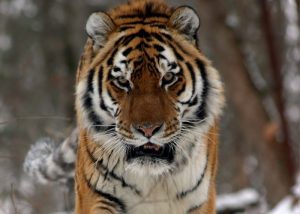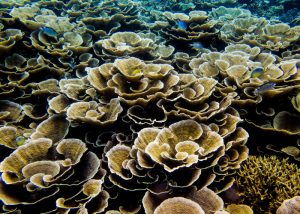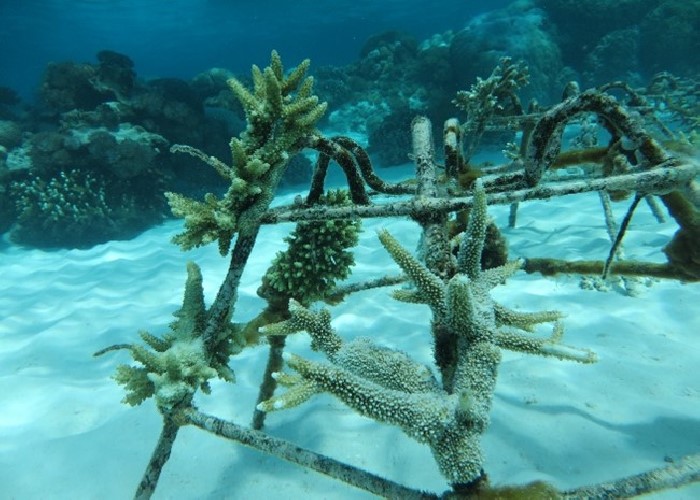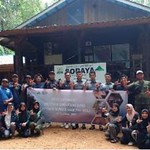Scroll Percentage: 0%
Large Projects in Indonesia 2022
From forest to coast: Conserving Indonesia's threatened felids and sea turtles
Indonesia conservation facts
This highly biodiverse country spreads across almost 18,000 islands and is filled with incredible natural resources and vast flora and fauna. 12% of the world's mammal species inhabit Indonesia and includes the Sumatran tiger, the rare Javan rhino, and the orangutan. It also has approximately 10% of the world's known plant species and 17% of all bird species. A megadiverse country, Indonesia possesses the second highest level of biodiversity in the world after Brazil. According to the IUCN Red list, Indonesia is home to 1,614 threatened species.
Large projects in Indonesia
Two large projects are currently being undertaken in Indonesia, which are locally implemented, managed by The Mohamed bin Zayed Species Conservation Fund and sponsored by Mubadala Investment Corporation and its local asset, Mubadala Petroleum. In Sumatra our conservation partners Panthera and FKL are determining baseline population parameters of wild cats outside the protected areas and identifying and mitigating critical threats to their survival. Along the coast of West Sulawesi, The Faculty of Marine Science at Hasanuddin is implementing coral reef and seagrass transplantation for the sea turtles that are dependent on these habitats for their survival.

PROJECT MANAGEMENT PARTNERS IN INDONESIA
The Fund manages both projects in cooperation with our local partners. We work with the Panthera Corporation as our partner in conserving threatened wild cats in Sumatra. Established in 2006, Panthera is devoted to the conservation of the world’s 40 species of wild cats and the vast ecosystems they inhabit. The Faculty of Marine Science and Fisheries (FIKP), Indonesia is our partner for the establishment of a Marine Protected Area (MPA) and for the restoration of seagrass and coral habitats. FIKP was established in 1988 with the purpose of developing research excellence and policy recommendations for central and local governments in the field of marine and fisheries.

Both projects are supported by Mubadala Investment Corporation and its in-country asset, Mubadala Petroleum, who is a leading international, upstream oil and gas exploration and production company. They manage assets and operations spanning 10 countries globally, with a presence Southeast Asia, the Middle East and North Africa and Russia.
Wild cats at the edge
Project One: Conservation of endangered Felidae on the human-dominated island of Sumatra
Progress in 2022 and next steps
Sumatra, Indonesia has a network of protected areas important to wild cat conservation. Although their presence is not only confined to these areas with many populations existing outside the protected areas.
Within our target area, approximately 70% of the local community from the Seulekat Village works as farmers and 30% as fishermen. To kickstart the project, the research team conducted a survey (involving 72 respondents) to analyse the roles and possible use of wildcats for the local community. This was as a result of a Sumatran tiger attack on a local farmer working in the field. The project team set up camera traps to A) detect tiger presence and box traps to B) catch and release the tigers back into the forest.
Awareness raising campaigns is a big part of the educational process. The project team initiated various activities including a collaboration with Sebastian Kennerknecht (a wildlife and conservation photographer), various school visits and Samatran tiger poster distribution on Global Tiger Day.
Looking ahead, forest patrols and camera trap deployment will become a big part of the project in 2023.
400 camera traps deployed in 200 stations capturing 27,617 images in total
Indonesia Seagrass and Coral Nursery
Project Two: Indonesia Seagrass and Coral Nursery
Creating a marine protected area for sea turtles in West Sulawesi, Indonesia
A top priority is to conserve, protect and even increase the coral reef and seagrass areas of this pristine archipelago in the Makassar Straits, 650km north of Bali. A key component of this project is to train local community members to monitor and manage the condition of the seagrass and coral reef cover and to provide them with an income such as cultivating seaweed.
Photos presented by Department of Marine Sciences, Hasanuddin University
Sea turtles are dependent on coral and seagrass habitats for their survival because they provide them with food, shelter and nursery grounds
Progress in 2022 and next steps
During 2022, the project commenced with coral and seagrass habitat restoration.
A total of 400 units of coral spiders were laid in Salissingan island and 200 units in Gusung Durian (each spider contains 18 coral seeds). In total 10,800 coral seeds were successfully transplanted.
In terms of seagrass, 1,500 seeds were transplanted in Salissingan island and a further 1,000 seagrass seeds in Gusung Durian.
Coral and seagrass were monitored in the first few months after transplantation. The corals transplanted in Gusung Duian and Salingassan had survival rates of 97% and 82% respectively and grew between 0.48 and 1.61cm.
Unfortunately, the seagrass transplantation was not successful. Reasons cited included potential consumption by sea turtles, strong currents, and sedimentation.
The research team will revisit the seagrass project in 2023 and monitor the growth and success of the transplanted coral.
10,800 coral seeds transplanted with survival rate of 60-92%
Field Reports 2022
Helping to restore the marine ecosystem to support turtle conservation
Planting a forest under the sea
Sumatran Tiger and other endangered species caught on camera
Refresher courses for SMART patrol teams






